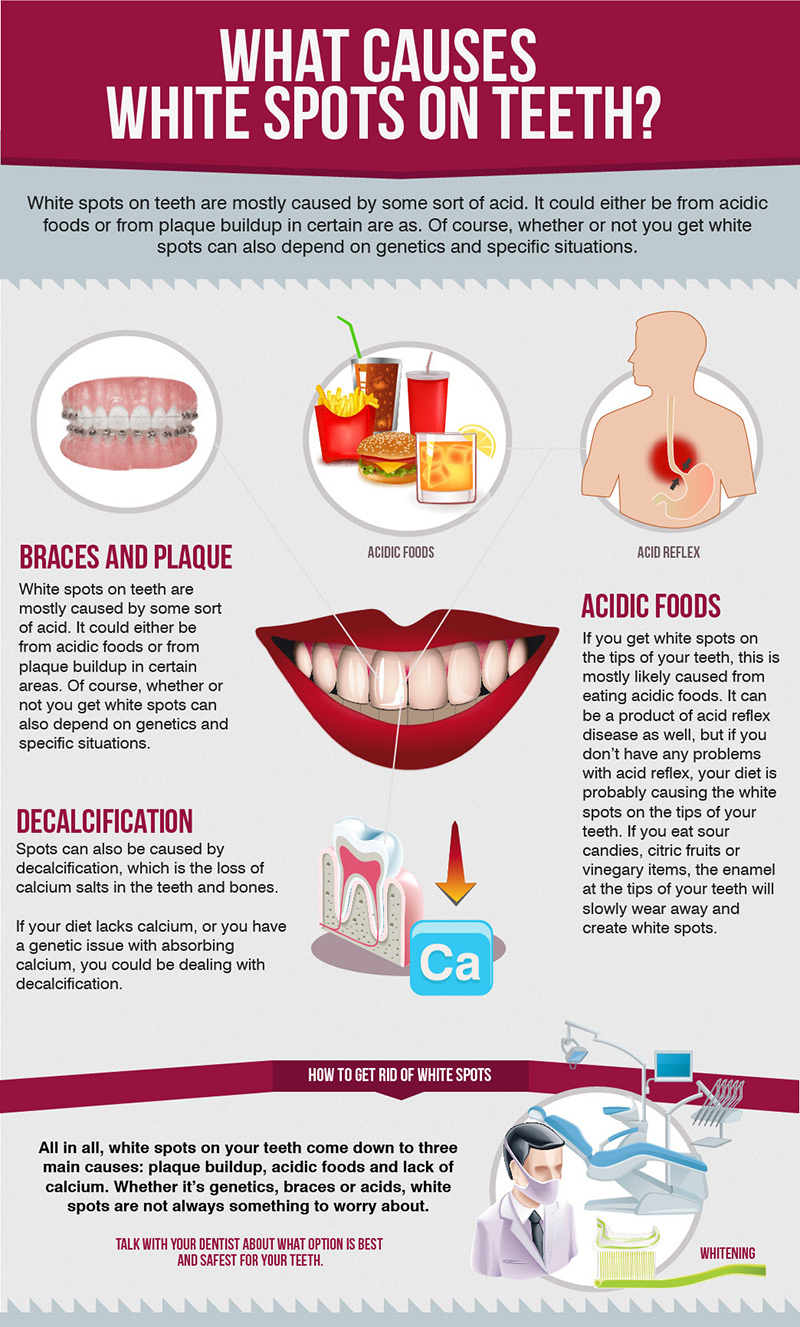What Causes White Spots Between Teeth? Fix Now

The formation of white spots between teeth, also known as interproximal white spots, can be attributed to several factors. These spots are often a cause of concern for individuals, as they can affect the appearance of one’s smile. To understand how to address this issue, it’s essential to delve into the underlying causes.
One primary reason for the development of white spots between teeth is the accumulation of plaque and bacteria. When food particles, especially those high in sugar and starch, are not properly cleaned from between the teeth, they provide a fertile ground for bacteria to multiply. As bacteria feed on these particles, they produce acids that can lead to the demineralization of tooth enamel, causing white spots to form. This process is a precursor to tooth decay and can lead to more severe dental issues if not addressed promptly.
Another significant factor contributing to the appearance of white spots is poor oral hygiene. Inadequate brushing and flossing can lead to the buildup of plaque and bacteria between the teeth, exacerbating the problem. The use of a fluoride toothpaste and regular dental check-ups can help mitigate this issue, but consistent daily habits are crucial.
Diet also plays a critical role in the formation of white spots. Consuming foods and beverages high in sugar, acid, or starch can increase the risk of developing these spots. The frequent intake of such substances can lead to constant acid production in the mouth, wearing down the enamel and resulting in white spots.
Furthermore, dental procedures such as orthodontic treatments can sometimes lead to the formation of white spots. During orthodontic treatment, brackets and wires can make it challenging to maintain perfect oral hygiene, leading to plaque buildup around the brackets and between the teeth. This emphasizes the importance of meticulous oral care during and after orthodontic treatment.
In addition to these factors, genetic predisposition can also influence the likelihood of developing white spots between the teeth. Some individuals may naturally have weaker enamel, making them more susceptible to demineralization and the resulting white spots.
To address white spots between teeth effectively, it’s crucial to adopt a comprehensive approach that includes both preventive measures and treatment options. Improving oral hygiene practices is the first step. This involves brushing teeth at least twice a day with a fluoride toothpaste and flossing once a day to remove plaque and bacteria from between the teeth. Regular dental cleanings and check-ups are also vital for early detection and treatment of any dental issues.
For existing white spots, various treatment options are available. Fluoride varnishes or gels can be applied by a dentist to help remineralize the tooth enamel. In some cases, dentist-recommended toothpaste or mouthwashes with higher concentrations of fluoride may be suggested for home use. For more pronounced spots or as a preventive measure, dental sealants can be applied to the areas between the teeth to protect them from further decay.
In severe cases where the white spots have led to significant decay, fillings or other restorative procedures may be necessary. It’s also worth noting that while over-the-counter whitening products may seem like a solution, they are not recommended for white spots caused by decay or demineralization, as they can further damage the tooth structure.
Prevention remains the best approach to avoiding white spots between the teeth. By combining good oral hygiene practices, a balanced diet, and regular dental care, individuals can significantly reduce their risk of developing these spots. For those already experiencing this issue, consulting a dentist for personalized advice and treatment can help restore the health and appearance of their teeth.
How can I prevent white spots from forming between my teeth?
+To prevent white spots, maintain good oral hygiene by brushing your teeth at least twice a day with a fluoride toothpaste and flossing once a day. Regular dental check-ups and a diet low in sugars and acids can also help prevent the formation of white spots.
Can white spots between teeth be treated at home?
+While some over-the-counter products may claim to treat white spots, it's recommended to consult a dentist for proper evaluation and treatment. A dentist can provide fluoride treatments, sealants, or other necessary procedures to effectively address the issue.
Are white spots between teeth a sign of a more serious dental issue?
+Yes, white spots can be an early sign of tooth decay or demineralization. If left untreated, they can lead to more severe dental problems, including cavities and tooth sensitivity. Regular dental check-ups can help identify and treat these issues early on.
In conclusion, white spots between teeth are a common issue that can arise from various factors, including poor oral hygiene, diet, and genetic predisposition. By understanding the causes and adopting preventive measures, individuals can reduce their risk of developing these spots. For those already experiencing this issue, consulting a dental professional for personalized advice and treatment is essential for restoring the health and appearance of their teeth.

